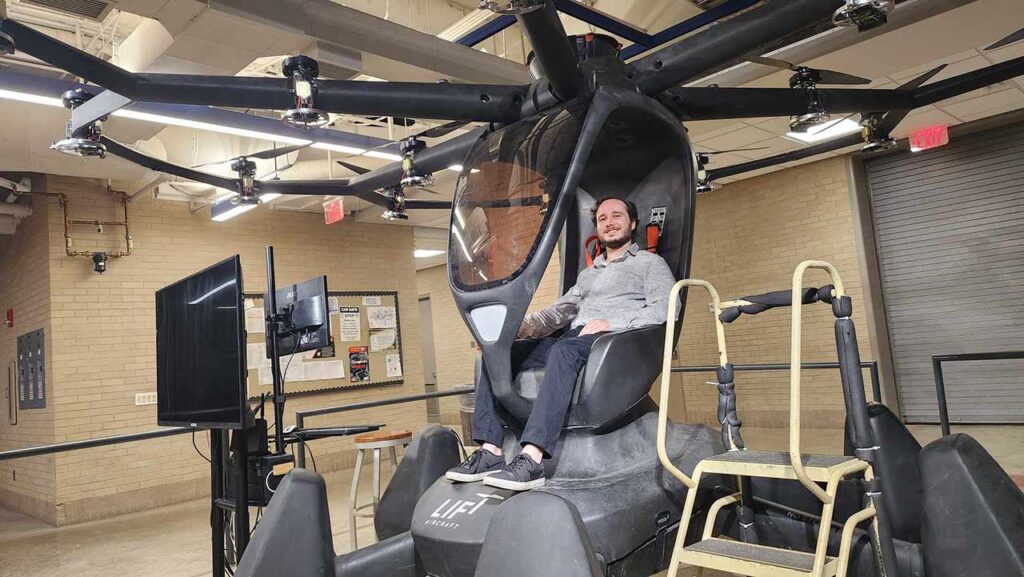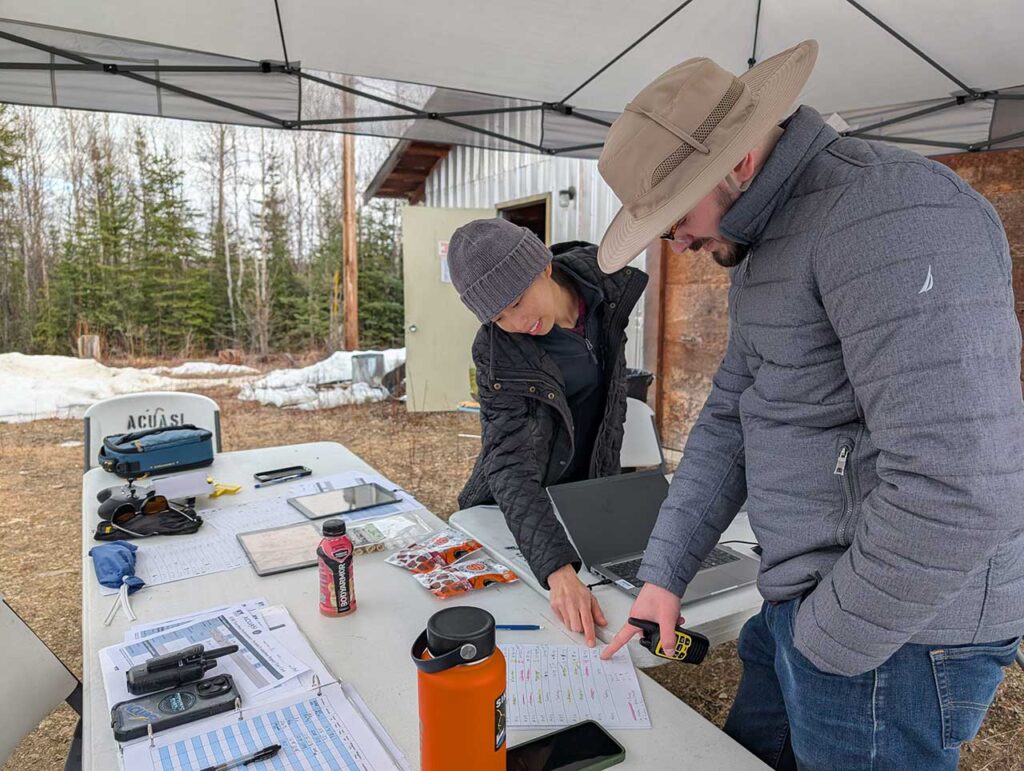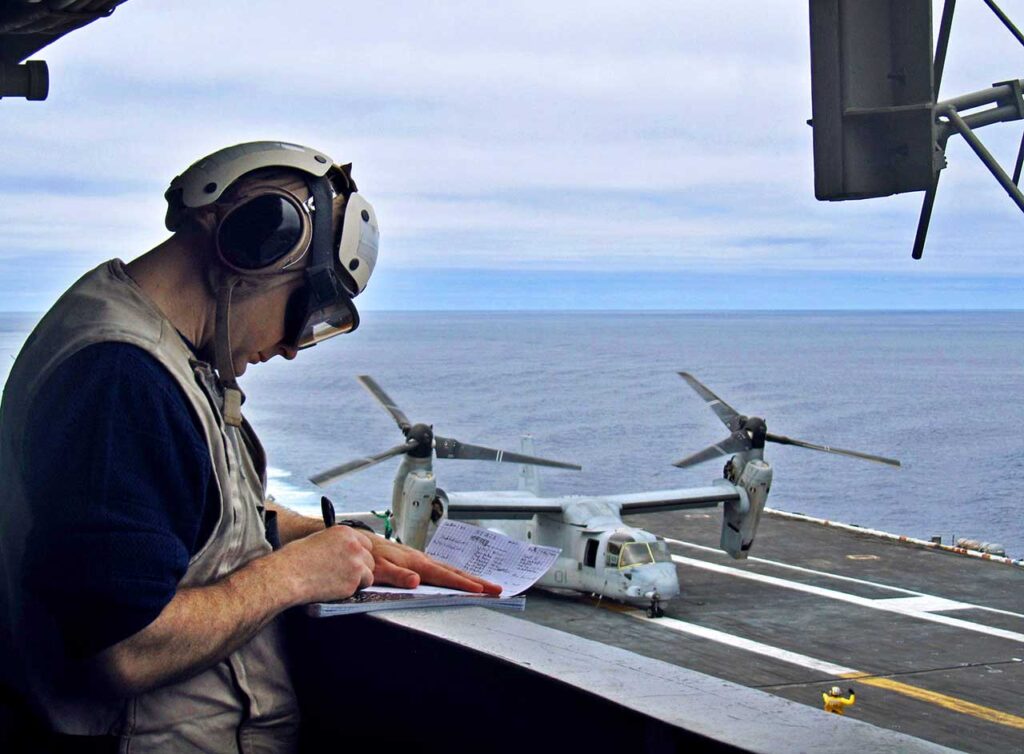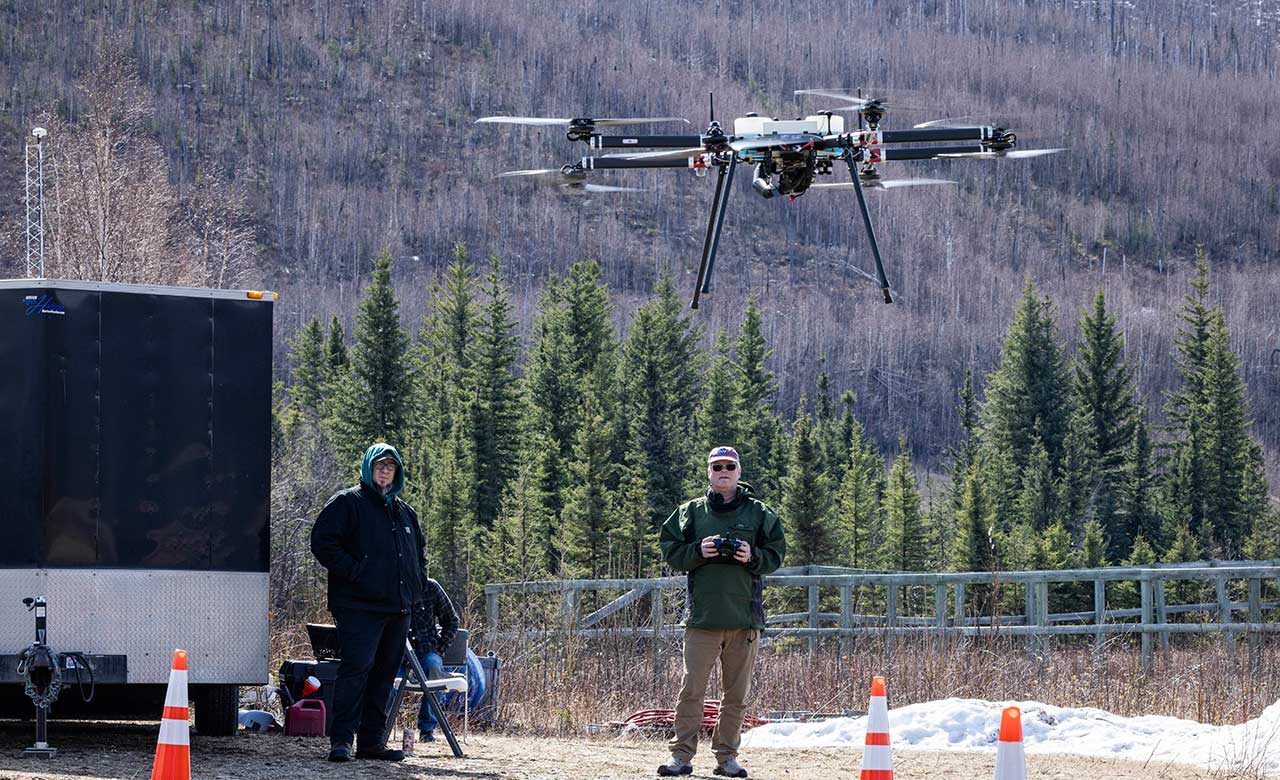As uncrewed aircraft systems (UAS) and advanced air mobility (AAM) platforms become integral to daily life—delivering packages, supporting emergency responders, and promising future passenger transport—the security challenges they present have never been more urgent or complex. Cyber threats, data integrity issues, supply chain vulnerabilities, and public safety airspace prioritization all converge in a fast-evolving aviation ecosystem. CNA, a not-for-profit research organization rooted in national defense and now a leader across the aviation industry, is on a mission to secure this high-stakes landscape. Through rigorous research, operational testing, and collaboration, CNA shapes the standards and tools that will define the future of autonomous flight.

A Scientist at the Helm: Dr. Marina Chumakov Rozenblat
Dr. Marina Chumakov Rozenblat, Chief Scientist for Data Management and Analytics at CNA, leads much of CNA’s innovative work in drone and AAM security. Her career began in biomedical materials research, but her drive to solve critical, real-world problems brought her to CNA. There, she modernizes information systems and addresses the safety and security challenges of the national airspace system (NAS).
“Right out of graduate school, I came across CNA where they solved a diverse set of problems that impacted our nation’s safety and security, where you really needed to think critically and outside the box. That seemed to be a really exciting and a positive mission, so I dove right in,” Rozenblat recalled.
Her work spans upgrading aeronautical information systems and pioneering cybersecurity strategies for UAS traffic management (UTM). She emphasizes standardized, best-practice approaches to ensure interoperability and harmonization, with the ultimate goal of improving the safety and security of the nation’s airspace.
CNA’s Origin: From Navy Operations to National Security
CNA’s story began during World War II, when the U.S. Navy embedded scientists on aircraft carriers to analyze strategies and provide data-driven insights. This hands-on approach led to the founding of CNA, which now serves a broad spectrum of federal, state, and local government clients, as well as international partners.
Today, CNA operates as a two-part not-for-profit:
- The Center for Naval Analyses is the only Federally Funded Research and Development Center (FFRDC) for the U.S. Navy, providing independent, objective analysis to the Department of Defense and other agencies.
- The Institute for Public Research (IPR) addresses challenges across aviation, transportation, healthcare, and justice, with a focus on operational efficiency and data management.
Rozenblat works at the Center for Data Management and Analytics, one of IPR’s four divisions. This dual-use structure allows CNA to bridge military and civilian needs, bringing defense-grade rigor to public sector challenges and ensuring that security innovations benefit the entire aviation ecosystem.
“We are a research organization working with interdisciplinary teams and our focus is really to provide unique, independent and objective analysis, facing the toughest security and defense problems. We’re a not-for-profit organization, so we really want to focus on objective research and we’re committed to the public interest and our clients’ mission,” Rozenblat said.

Broad Spectrum Support: Defense, Public Safety and Commercial Aviation
CNA’s historic partnership with the U.S. Navy and Department of Defense (DoD) continues to drive innovation in secure military UAS operations. Simultaneously, CNA collaborates with public safety agencies to integrate drones into emergency response and disaster management—safeguarding sensitive data and ensuring operational coordination.
CNA’s deep operational roots allow it to translate research into practical solutions for the aviation industry. Rozenblat and her team work with the FAA, NASA, and commercial operators to integrate drones into the NAS, tackling the challenges of scaling operations while maintaining safety and security.
“It’s (NAS security) not just a federal issue. We want to make sure that all the stakeholders have a voice and benefit…that we have considered their needs right in things like data management and the very complex regulatory and policy landscape,” Rozenblat explained.
How CNA Selects Research Topics: Client-Driven and Innovative
CNA’s research agenda is shaped by a dynamic blend of client needs and internal innovation. Clients—including federal agencies, state and local governments, public safety organizations, and commercial stakeholders—bring complex, real-world problems to CNA for objective, actionable analysis.
CNA also invests in internal research and development. Staff are encouraged to propose impactful research topics, which are selected based on their potential value and relevance to emerging challenges. For example, Rozenblat led an internally funded project exploring the risks and benefits of digital twins in aviation and supply chain security for drones—topics identified through CNA’s forward-looking perspective.
This dual approach ensures CNA remains responsive to immediate client needs while proactively anticipating future industry challenges.
Confronting Security Threats in UAS and AAM
The rapid expansion of drones and AAM technologies introduces new security risks. CNA develops data governance models and contributes to industry standards, ensuring new aviation technologies are interoperable, secure, and efficient from the start.
“UAS are very unique in that they are tiny little computers flying around. They’re vulnerable to hacking and they’re vulnerable to the supply chain. You can just go to the store and buy a drone right off the shelf…that makes us vulnerable from the very start,” Rozenblat said.
CNA’s research addresses these vulnerabilities from multiple angles:
- Applying the NIST Cybersecurity Framework to identify and prioritize over 100 key research areas for future UAS operations.
- Addressing threats such as ransomware, denial of service attacks, and data breaches.
- Analyzing the software and hardware components of drones to identify vulnerabilities, such as tampered firmware.
- Securing default settings on commercial off-the-shelf (COTS) drones, in collaboration with partners like the FAA and the New York test site, to protect drones used in urgent missions from cyber threats.
CNA also incorporates strategies to mitigate insider threats and ensure robust governance throughout the system lifecycle.

UCATs: Simulating the Future of UAS Traffic Management
The UAS Cooperative Airspace Traffic Simulation (UCATs) tool is a flagship CNA initiative. UCATs is an agent-based model that simulates flight planning and deconfliction in dense urban environments, helping policymakers and decision-makers evaluate how different rules impact high-density operations. (See prior AG coverage here).
UCATs allows policymakers and decision-makers to evaluate how different rules for deconfliction and prioritization impact high-density operations, from public safety missions to commercial deliveries. By ingesting real flight plans and simulating conflicts, delays, and cancellations, UCATs provides actionable insights for regulators and service suppliers alike.
Rozenblat explained, “Public safety agencies could use this to plan the way that they would initiate their high priority operations when they’re facing congested airspace. And service suppliers could also use it to consider how they might adjust their flight planning in the future as we start to see a growth in scale.”
The tool can be integrated with UAS service suppliers (USS) to support real-time planning and ensure that the prioritization of critical missions—like public safety drone-as-first responder (DFR) flights—in congested airspace. This line of effort remains a major focus of CNA’s ongoing research and demonstrations.
Real-World Impact: ACUASI Collaboration
CNA’s commitment to operational relevance is demonstrated by its partnership with the Alaska Center for UAS Integration (ACUASI). With the FAA and industry, CNA conducts live flight trials in Alaska to test UCATs and other security concepts in real-world scenarios. These trials process and deconflict actual flight plans, evaluating airspace management tools under operational conditions. The goal is to gather empirical data to refine CNA’s models, provide practical feedback to regulators and industry, and ensure research translates into tangible improvements in safety and efficiency.
What’s Next for CNA? Securing the Autonomous Skies
As drones and AAM platforms reshape the skies, CNA’s work—anchored by leaders like Dr. Marina Chumakov Rozenblat—makes security a foundational pillar. Looking ahead, CNA’s research agenda includes:
- Developing proof-of-concept tools to analyze software and hardware bills of materials for drones and map potential attack vectors.
- Advancing counter-UAS policy, exploring how state and local agencies can participate in counter-UAS operations and share information with federal partners.
- Contributing to third-party assessment programs for secure drone operations.
- Presenting research at national conferences.
Through rigorous research, operational testing, and a commitment to public good, CNA will continue to tackle the industry’s toughest security problems and shape a future of safe, scalable, and trusted autonomous aviation.
For those seeking to understand or partner with a proven leader at the forefront of UAS and AAM security, CNA stands ready—dedicated to the safety and security of the nation, now and for the skies of tomorrow.
By: Dawn Zoldi

